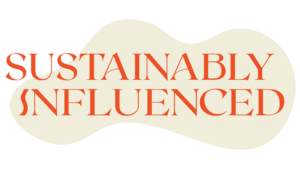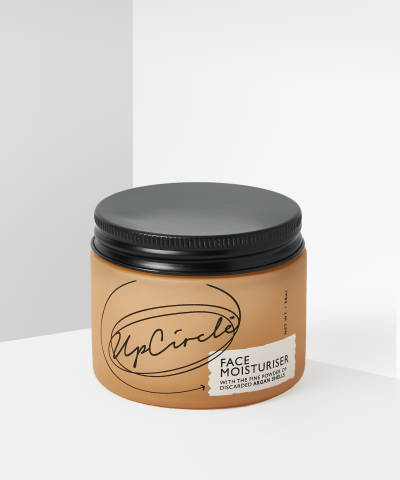Beauty Trends To Look Out For in 2023
Like fashion, the beauty industry holds some rather ugly truths behind all the glitter and pretty packaged products.
It’s estimated that 120 billion units of packaging are produced each year, consisting of plastic lids, cellophane and multi-layered boxes. Most of which is non-recyclable and often ends up in either landfills or our oceans.
There are of course several brands making great strides to tackle this issue and the ‘clean/ethical’ beauty industry is thriving with 76% of consumers now seeking more sustainable products.
So what can we expect from ethical beauty in 2023? What are the trends that will help the beauty industry clean up its act?
Circular Beauty
You may be familiar with the term ‘circular beauty,’ like circular economy and circular fashion. It lives by the cradle-to-cradle principle which identifies a product’s lifecycle as a loop.
For far too long we’ve existed in either linear or recycling economies. In a linear economy we take from natural resources, make the products be it clothing or beauty, we consume them and then waste them.
In a recycling economy we take from natural resources, make the products, consume them and occasionally, where possible we recycle them. However, this is still problematic as some products are either non-recyclable, consumers choose not to recycle or there’s no clear information on HOW to recycle.
In a circular economy, we take from natural resources, make the products and then consume them but we then keep as much of the product elements in play over and over for as long as possible.
This can be done by reusing, refilling opportunities, recycling, reclaiming, avoiding waste wherever possible, upcycling and so on.
Here are a few products that are stepping into the world of circular beauty:
REN Clean Skincare Evercalm Overnight Recovery Balm
REN skincare has zero waste and sustainability at its core. Their line featured sustainably sourced bioactive ingredients and the brands are passionate about removing plastic from our oceans. The brand has taken 45 tons of PCR plastic waste from landfill and repurposed it into their packs and saved a staggering 4.5 million single-use sachets from entering landfills too.
N°1 De Chanel Revitalising Cream
Adding a little bit of French luxury to circular beauty with Chanel’s N°1 De Chanel Revitalizing Cream. The cream is made from 95% natural ingredients and their new bio-based packaging is clearly labelled for each component and features organic ink. The cream can also be refilled as many times as desired, with the refill container being made from glass and the cap containing biocomposite from the Camellia husks and wood by-products.
St. Rose Vigilante Eau De Parfum
St. Rose prioritises working with ingredients that are sourced directly from cooperatives and farmers at origin. The brand also upcycled distillation in its ingredients, like the Eucalyptus in the Terre Rouge scent.
Rose Hermès Silky Blush Powder Refill
Another luxury brand embracing refills, simply insert the needle provided into the slot and you can pop out the old blusher and replace it with a new one when needed. You need to order the blush separately, however, the refill is compatible with all objects in the Rose Hermès Silky Blush collection.
Radical transparency
It’s 2023 and the consumer demand for transparency from brands is on the rise. Beauty brands can no longer hide behind vague terms like ‘sustainable’, ‘clean’ or ‘eco-friendly.’ And according to the independent third-party platform Provenance, 80% of consumers have doubts about whether they can trust the beauty industry’s sustainability claims.
Along with new greenwashing legislation, radical transparency could be the answer to building trust between brands and their consumers.
So what is radical transparency? It’s a phrase used across many different industries to describe actions and approaches that radically increase the openness of organisational processes and data. Ultimately it puts greater information into the consumer’s hands and will therefore help them to make better choices.
Third-party platforms such as Clearforme and Provenance are leading the way in helping to demystify any industry jargon. But brands such as UpCircle, Isla Beauty and Ulé are doing their part as well. From providing QR codes that allow complete traceability to inviting customers to join online events where the brand talks through its CSR reports and even openly publishing information about costs.
As the demand for transparency grows, you can expect to see more openness from brands in 2023.
Blockchain technology
Radical transparency is going to be big this year, but how can brands get there? How can they ensure that they’re sharing ALL parts of their supply chain and ingredients etc?
The answer is blockchain. If you’re familiar with cryptocurrency then you may have heard of the term before. If not, you might be thinking what the hell is it and how does the technology used in cryptocurrency relate to transparency within the beauty industry?
Well, blockchain is a secure and decentralised system of recording and storing information. It is created in a way that makes it impossible to change, hack or even cheat. It works as a ledger of transactions and can track assets within a business.
And now it’s being used within the beauty industry to help brands become more transparent and finally put a stop to the issue of greenwashing.
With 60% of them wanting to know more about the sourcing of ingredients in their products, it’s no surprise that things like blockchain and radical transparency are on the rise.
In 2019 popular E-tailer Cult Beauty is just one brand using the technology to ensure full transparency is given to their customers. They worked together with Provenance to help install 1,500 “proof points” across 60 different brands including REN skincare and Becca Cosmetics.
The demand for information is on the rise and with the advances in technology we can expect more brands to be utilising blockchain.

